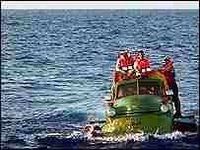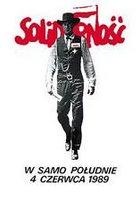
Descended from the legendary Dukes of Alba, daughter in a wealthy Cuban family, Mercedes de Acosta was born in 1893 in New York, raised near Fifth Avenue, and had a beautiful sister Rita de Acosta who was a model for artists John Singer Sargent and Giovanni Boldini. Married to painter Abram Poole, Mercedes was socialite, poet, playwright, Hollywood set and costume designer as well as script writer. She knew many of the greats of her day: Bessie Marbury, Rodin, Edith Wharton, Stravinsky, Sarah Bernhardt, Elenora Duse, Picasso, Cecil Beaton, Elsa Maxwell, and Krishnamurti. Near the end of her life, she met and befriended Andy Warhol, and introduced him to many of the people who would count in his career.
Consuelo (Hatmaker) Sides, whose husband had been the World War I French flying ace Charles Nungesser, accompanied Mercedes on her passage to India. After arriving, de Acosta met former President Woodrow Wilson's daughter, Margaret, a devotee at Sri Aurobindo's ashram.
In 1960, she published an autobiography, Here Lies The Heart, dedicated to Maharshi, in which she wrote, To Bhagavan Ramana Maharshi, the only completely egoless, world-detached, and pure being I have ever known. She spent three days with him and remembered them as the most significant of her life.
At a dinner party she became interested in Maharshi after she met Paul Brunton, an Englishman who had spent time with the sage, and had published A Search in Secret India, chronicling his transformative experiences at Arunachala.
She later read Brunton's book and of it, she wrote that it "had a profound effect on me. . . . It was as though some emanation of this saint was projected out of the book to me. . . . Nothing could distract me from the idea that I must go and meet this saint. . . . . I felt I would meet the Maharshi and that this meeting would be the greatest experience of my life."
As the car neared Maharshi's home she says,"the driver explained he could take me no farther. I turned toward the hill of Arunachala and hurried in the hot sun along the dust-covered road to the abode about two miles from town where the Sage dwelt. As I ran those two miles, deeply within myself I knew that I was running toward the greatest experience of my life."
"When, dazed and filled with emotion, I first entered the hall, I did not quite know what to do. Coming from strong sunlight into the somewhat darkened hall, it was, at first, difficult to see; nevertheless, I perceived Bhagavan at once, sitting in the Buddha posture on his couch in the corner. At the same moment I felt overcome by some strong power in the hall, as if an invisible wind was pushing violently against me. For a moment I felt dizzy."
"Then I recovered myself. To my great surprise I suddenly heard an American voice calling out to me, 'Hello, come in.' It was the voice of an American named Guy Hague*, who originally came from Long Beach, California. . . . " [*Some say Guy Hague is Somerset Maugham's Larry Darrell in The Razor's Edge.
The Wanderling says his mentor was Maugham's inspiration.]
After I had been sitting several hours in the hall listening to the mantras of the Indians and the incessant droning of flies, and lost in a sort of inner world, Guy Hague suggested that I go and sit near the Maharshi. . . . I moved near Bhagavan, sitting at his feet and facing him. . . ."
"He moved his head and looked directly down at me, his eyes looking into mine. It would be impossible to describe this moment and I am not going to attempt it. I can only say that at this second I felt my inner being raised to a new level-as if, suddenly, my state of consciousness was lifted to a much higher degree. . . ."
"[I asked Maharshi,] tell me, whom shall I follow--what shall I follow? I have been trying to find this out for years by seeking in religions, in philosophies, in teachings."
"Again there was silence. After a few minutes, which seemed to me a long time, he spoke. 'You are not telling the truth. You are just using words--just talking. You know perfectly well whom to follow. Why do you need me to confirm it?' "
"You mean I should follow my inner self?" I asked.
"I don't know anything about your inner self. You should follow the Self. There is nothing or no one else to follow."
I asked again, "What about religions, teachers, gurus?"
"If they can help in the quest of the Self. But can they help? Can religion, which teaches you to look outside yourself, which promises a heaven and a reward outside yourself, can this help you? It is only by diving deep into the spiritual Heart that one can find the Self."
"He placed his right hand on his right breast and continued,
Here lies the Heart, the dynamic, spiritual Heart. It is called Hridaya and is located on the right side of the chest and is clearly visible to the inner eye of an adept on the spiritual path. Through meditation you can learn to find the Self in the cave of this Heart. . . ."
"Bhagavan pointed out to me that the real Self is timeless. 'But,' he said, 'in spite of ignorance, no man takes seriously the fact of death. He may see death around him, but he still does not believe that he will die. . . .' "
"To write of this experience with Bhagavan, to recapture and record all that he said, or all that his silences implied, is like trying to put the infinite into an egg cup. . . . On me he had, and still has, a profound influence. . . .I definitely saw life differently after I had been in his presence, a presence that just by merely 'being' was sufficient spiritual nourishment for a lifetime. . . ."
"I sat in the hall with Bhagavan three days and three nights. . . . I wanted to stay on there with him but finally he told me that I should go back to America. He said, 'There will be what will be called a "war," but which, in reality, will be a great world revolution. Every country and every person will be touched by it.' You must return to America. Your destiny is not in India at this time.' . . . ."
"Bhagavan Ramana Maharshi died on April 14,1950. He had said, 'I am going away? Where could I go? I am here.' By the word 'here' he did not imply any limitation. He meant rather, that the Self 'is.' There is no going, or coming, or changing in that which is changeless and Universal. . . . millions in India mourned the Maharshi. A long article about his death in the New York Times ended with, 'Here in India, where thousands of so-called holy men claim close tune with the infinite, it is said that the most remarkable thing about Ramana Maharshi was that he never claimed anything remarkable for himself, yet became one of the most loved and respected of all'."
Her meeting with Maharshi was perhaps most remarkable in view of her life that preceded it. Alice B. Toklas once said of her, "you can't dispose of Mercedes lightly, she had the two most important women in US., Greta Garbo and Marlene Dietrich." Other lovers of Mercedes included the great actresses Alla Nazimova and Eva Le Gallienne and the legendary innovator of dance, Isadora Duncan. "I can get any woman away from any man," she liked to tell her friends. But what de Acosta eventually wanted more than anything was the 1938 interview with Ramana Maharshi. A woman of great appetites, she sought somebody who taught the quenching of appetites.
Mercedes de Acosta moved to a 68th Avenue apartment and died in relative poverty in 1968. In her autobiography she had revealed too many secrets about her friends, who then cut her out of their circles.
Her book,
Here Lies The Heart


 White Slavery & The Dark Continent: Lady Florence Baker, 1841-1916
White Slavery & The Dark Continent: Lady Florence Baker, 1841-1916







